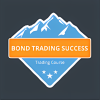-
×
 High Probability Trading Using Elliott Wave And Fibonacci Analysis withVic Patel - Forex Training Group
1 × $10.00
High Probability Trading Using Elliott Wave And Fibonacci Analysis withVic Patel - Forex Training Group
1 × $10.00 -
×
 Options Trading & Ultimate MasterClass With Tyrone Abela - FX Evolution
1 × $54.00
Options Trading & Ultimate MasterClass With Tyrone Abela - FX Evolution
1 × $54.00 -
×
 The Best Option Trading Course with David Jaffee - Best Stock Strategy
1 × $15.00
The Best Option Trading Course with David Jaffee - Best Stock Strategy
1 × $15.00 -
×
 Trading to Win (Seminar WorkBook 2003) with Bruce Gilmore
1 × $6.00
Trading to Win (Seminar WorkBook 2003) with Bruce Gilmore
1 × $6.00 -
×
 Crystal Ball Pack PLUS bonus Live Trade By Pat Mitchell - Trick Trades
1 × $20.00
Crystal Ball Pack PLUS bonus Live Trade By Pat Mitchell - Trick Trades
1 × $20.00 -
×
 ICT Prodigy Trading Course – $650K in Payouts with Alex Solignani
1 × $15.00
ICT Prodigy Trading Course – $650K in Payouts with Alex Solignani
1 × $15.00 -
×
 W. D Gann 's Square Of 9 Applied To Modern Markets with Sean Avidar - Hexatrade350
1 × $23.00
W. D Gann 's Square Of 9 Applied To Modern Markets with Sean Avidar - Hexatrade350
1 × $23.00 -
×
 Deep Dive Butterfly Trading Strategy Class with SJG Trades
1 × $41.00
Deep Dive Butterfly Trading Strategy Class with SJG Trades
1 × $41.00 -
×
 Order flow self-study training program with iMFtracker
1 × $10.00
Order flow self-study training program with iMFtracker
1 × $10.00 -
×
 The Orderflows Trade Opportunities Encyclopedia with Michael Valtos
1 × $8.00
The Orderflows Trade Opportunities Encyclopedia with Michael Valtos
1 × $8.00 -
×
 WondaFX Signature Strategy with WondaFX
1 × $5.00
WondaFX Signature Strategy with WondaFX
1 × $5.00 -
×
 TradeCraft: Your Path to Peak Performance Trading By Adam Grimes
1 × $15.00
TradeCraft: Your Path to Peak Performance Trading By Adam Grimes
1 × $15.00 -
×
 The Prop Trading Code with Brannigan Barrett - Axia Futures
1 × $23.00
The Prop Trading Code with Brannigan Barrett - Axia Futures
1 × $23.00 -
×
 Bond Market Course with The Macro Compass
1 × $15.00
Bond Market Course with The Macro Compass
1 × $15.00
Bond Trading Success
$297.00 Original price was: $297.00.$6.00Current price is: $6.00.
File Size: Coming soon!
Delivery Time: 1–12 hours
Media Type: Online Course
Bond Trading Success: Your Guide to Profitable Investing
Investing in bonds can be a reliable way to generate income and diversify your portfolio. However, achieving bond trading success requires a solid understanding of the market, effective strategies, and disciplined execution. This comprehensive guide will walk you through the essential steps and strategies to excel in bond trading.
What is Bond Trading?
Bond trading involves buying and selling bonds, which are debt securities issued by governments or corporations to raise capital. Bonds offer fixed interest payments over a specified period, making them an attractive option for income-seeking investors.
Types of Bonds
1. Government Bonds
- Treasury Bonds: Issued by the federal government, known for their safety and reliability.
- Municipal Bonds: Issued by state or local governments, often tax-exempt.
2. Corporate Bonds
- Investment-Grade Bonds: Issued by companies with high credit ratings.
- High-Yield Bonds: Issued by companies with lower credit ratings but offer higher interest rates.
3. International Bonds
- Sovereign Bonds: Issued by foreign governments.
- Foreign Corporate Bonds: Issued by international companies.
Key Strategies for Bond Trading Success
1. Understand Interest Rates
Interest rates have a significant impact on bond prices. When rates rise, bond prices fall, and vice versa. Monitoring interest rate trends can help you make informed trading decisions.
2. Diversify Your Portfolio
Diversification reduces risk by spreading investments across different types of bonds and issuers. A well-diversified portfolio can help mitigate losses if one sector underperforms.
3. Focus on Credit Quality
Assess the credit quality of bond issuers. Higher-rated bonds are safer but offer lower returns, while lower-rated bonds offer higher yields but come with increased risk.
4. Monitor Economic Indicators
Economic indicators such as inflation, GDP growth, and unemployment rates can affect bond prices. Keeping an eye on these metrics can provide insights into market movements.
5. Use Laddering Strategy
Laddering involves buying bonds with different maturities. This strategy helps manage interest rate risk and ensures a steady stream of income as bonds mature at different times.
Steps to Start Bond Trading
Step 1: Educate Yourself
- Read Books and Articles: Gain a thorough understanding of bond markets.
- Attend Seminars and Webinars: Learn from experts and stay updated on market trends.
Step 2: Choose a Brokerage
- Research Brokerage Firms: Look for firms that offer robust bond trading platforms.
- Compare Fees and Services: Ensure the brokerage meets your needs and budget.
Step 3: Open a Trading Account
- Complete the Application: Provide necessary information and fund your account.
- Familiarize Yourself with the Platform: Explore the tools and features available.
Step 4: Develop a Trading Plan
- Set Investment Goals: Define your income and growth targets.
- Determine Risk Tolerance: Decide how much risk you are willing to take.
- Select Bonds to Trade: Choose bonds that align with your strategy.
Step 5: Execute Trades
- Monitor the Market: Keep an eye on bond prices and interest rates.
- Place Orders: Use limit orders to control the price at which you buy or sell bonds.
- Review and Adjust: Regularly review your portfolio and make adjustments as needed.
Risk Management in Bond Trading
Set Stop-Loss Orders
Protect your investments by setting stop-loss orders to limit potential losses.
Regularly Rebalance Your Portfolio
Ensure your portfolio remains aligned with your investment goals and risk tolerance by periodically rebalancing it.
Stay Informed
Keep up with market news and trends to make timely and informed decisions.
Common Mistakes to Avoid
Overlooking Interest Rate Risk
Ignoring the impact of interest rates on bond prices can lead to significant losses.
Chasing High Yields
High-yield bonds can be tempting, but they come with higher risks. Balance your desire for returns with your risk tolerance.
Lack of Diversification
Concentrating your investments in a single type of bond or issuer can increase your risk. Diversify to protect your portfolio.
Tools for Bond Trading Success
Bond Screener
Use bond screening tools to filter bonds based on criteria such as yield, maturity, and credit rating.
Economic Calendars
Economic calendars track important events and indicators that can impact bond markets.
Trading Platforms
Choose a trading platform that offers advanced tools for bond analysis and trading.
Conclusion
Achieving bond trading success requires a blend of knowledge, strategy, and discipline. By understanding the market, diversifying your portfolio, and staying informed, you can build a robust bond trading strategy that generates consistent returns. With careful planning and execution, bond trading can be a rewarding component of your investment portfolio.

Commonly Asked Questions:
- Business Model Innovation: Accept the truth of a legitimate business! Our strategy is organising a group buy in which participants share the costs. We use these cash to acquire popular courses from sale pages and make them available to people with limited financial resources. Despite the authors’ worries, our clients love the cost and accessibility we give.
- The Legal Environment: Yes or No The legality of our activity is ambiguous. While we don’t have specific permission from the course authors to resell the material, there is a technicality at work. The author did not specify any limits on resale when purchasing the course. This legal intricacy is both an opportunity for us and a boon for individuals looking for low-cost access.
- Quality Control: Uncovering the Truth
Getting to the heart of the issue – quality. Purchasing the course straight from the sale page guarantees that all documents and resources are the same as those obtained through traditional channels.
However, we distinguish ourselves by going beyond personal research and resale. It is crucial to note that we are not the official course providers, which means that the following premium services are not included in our package:
- There are no scheduled coaching calls or sessions with the author.
- Access to the author’s private Facebook group or web portal is not permitted.
- No access to the author’s private membership forum.
- There is no direct email support available from the author or their team.
We operate independently, with the goal of bridging the pricing gap without the extra services provided by official course channels. Your comprehension of our distinct approach is much appreciated.
Be the first to review “Bond Trading Success” Cancel reply
You must be logged in to post a review.
Related products
Forex Trading
Forex Trading
Forex Trading
Forex Trading
Forex Trading
Forex Trading
Forex Trading
Forex Trading
Forex Trading
Forex Trading
Forex Trading
Forex Trading













Reviews
There are no reviews yet.